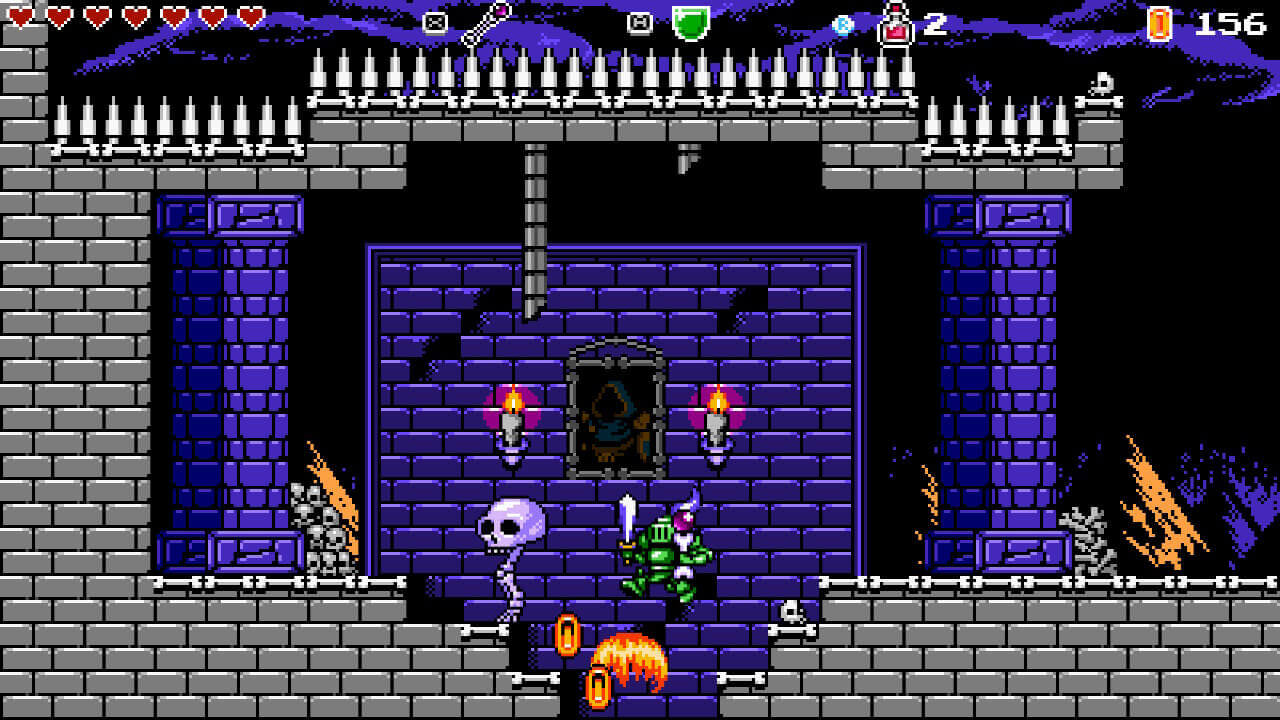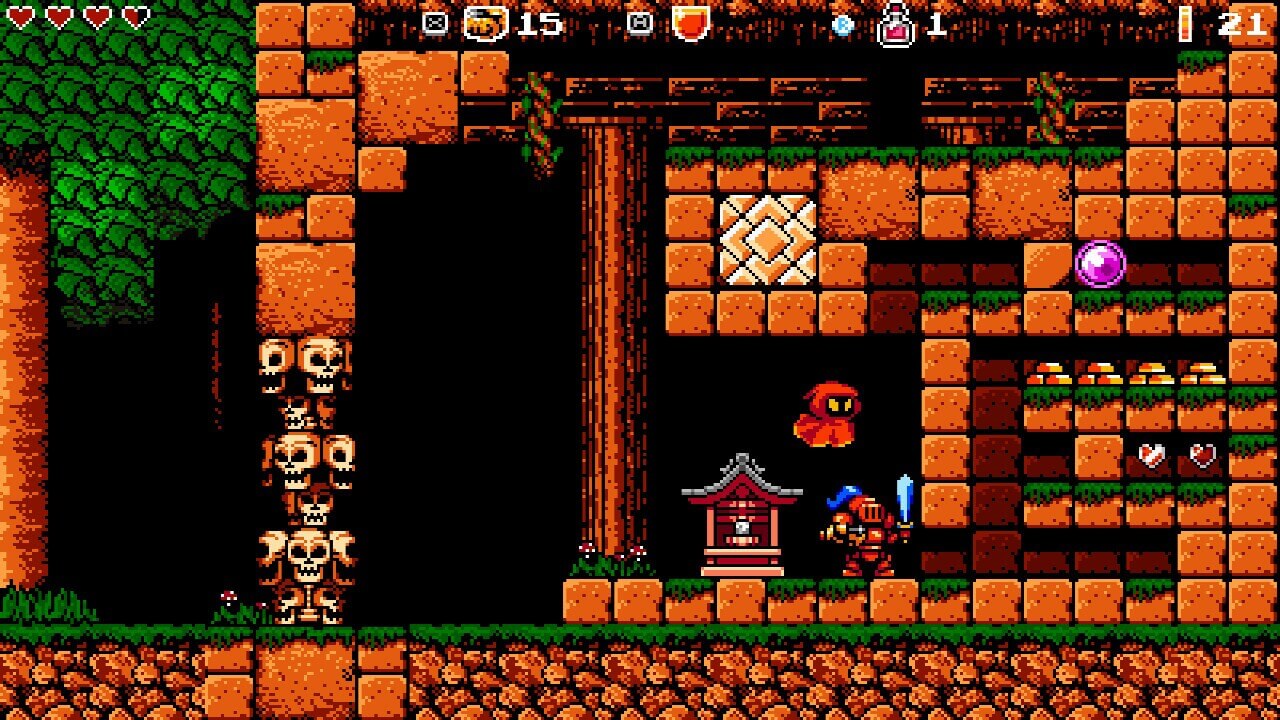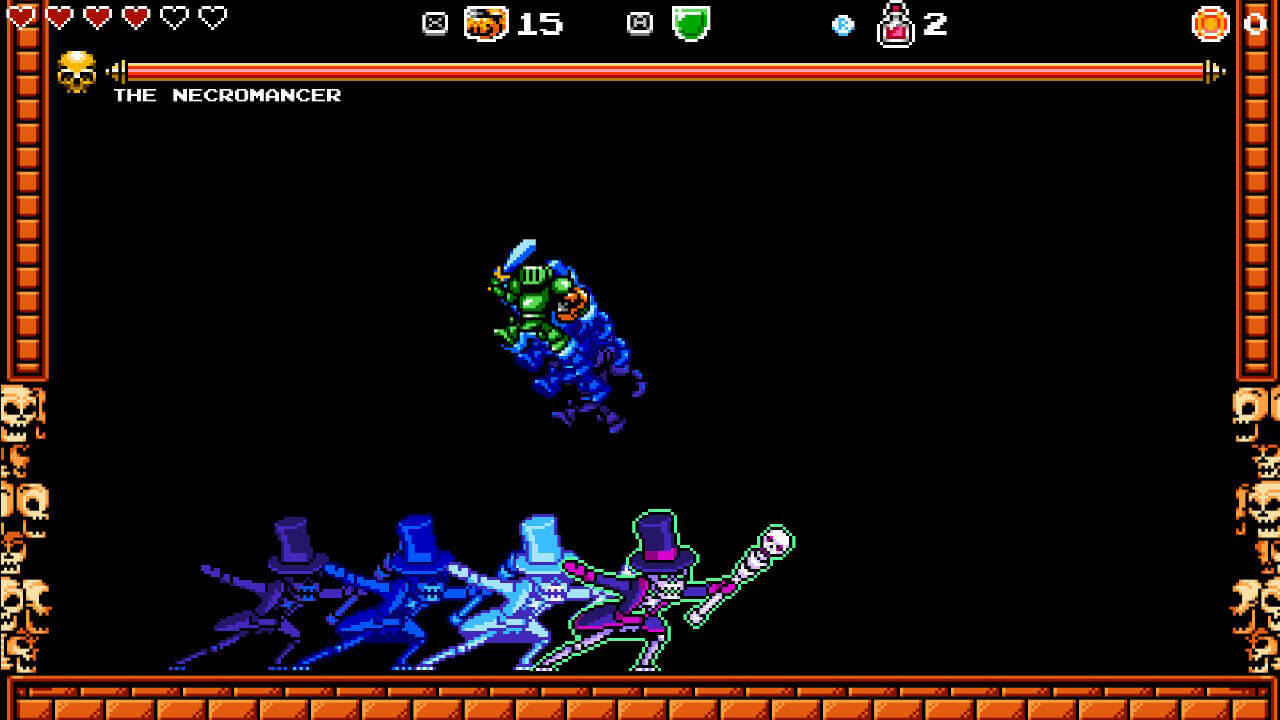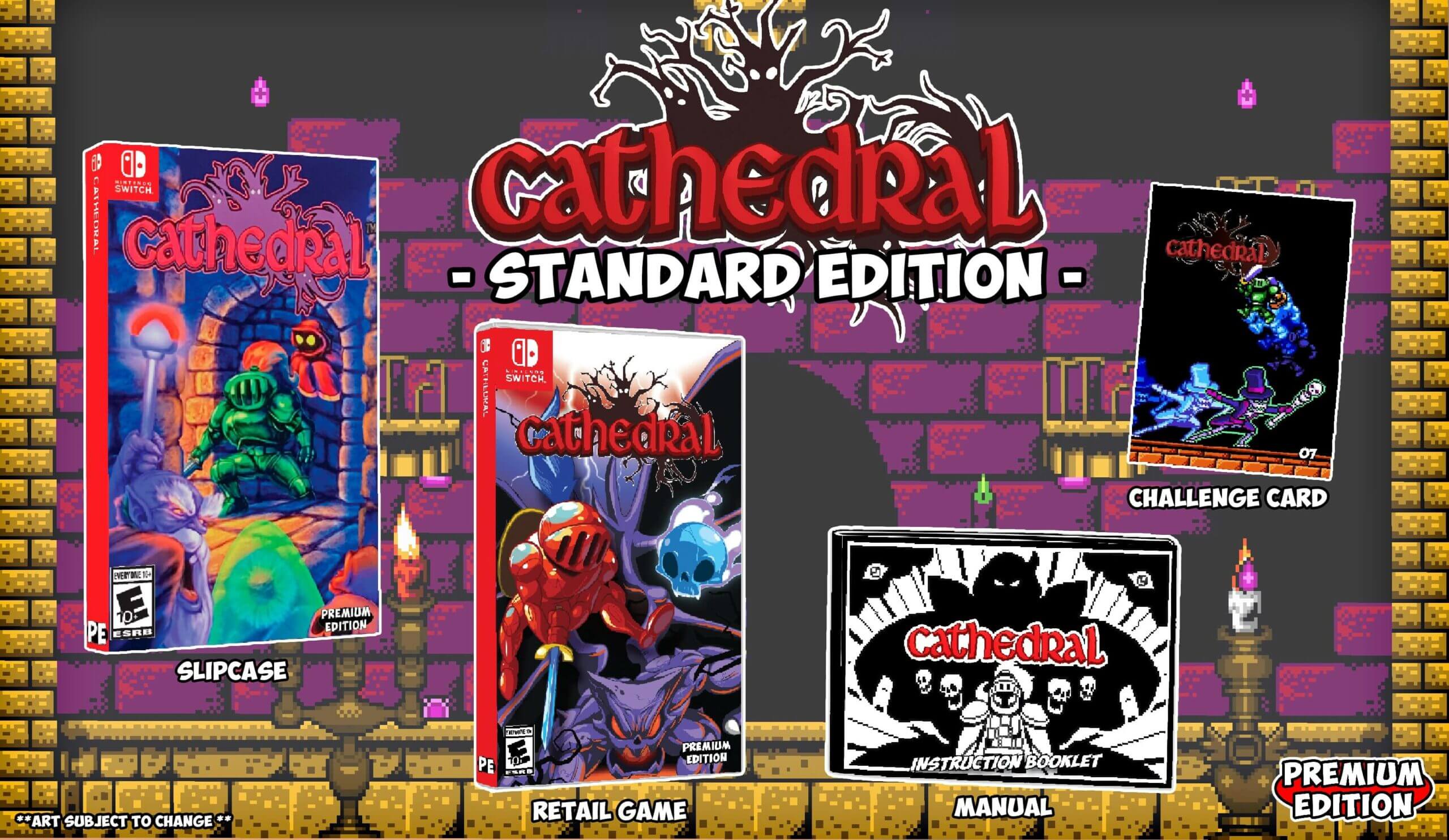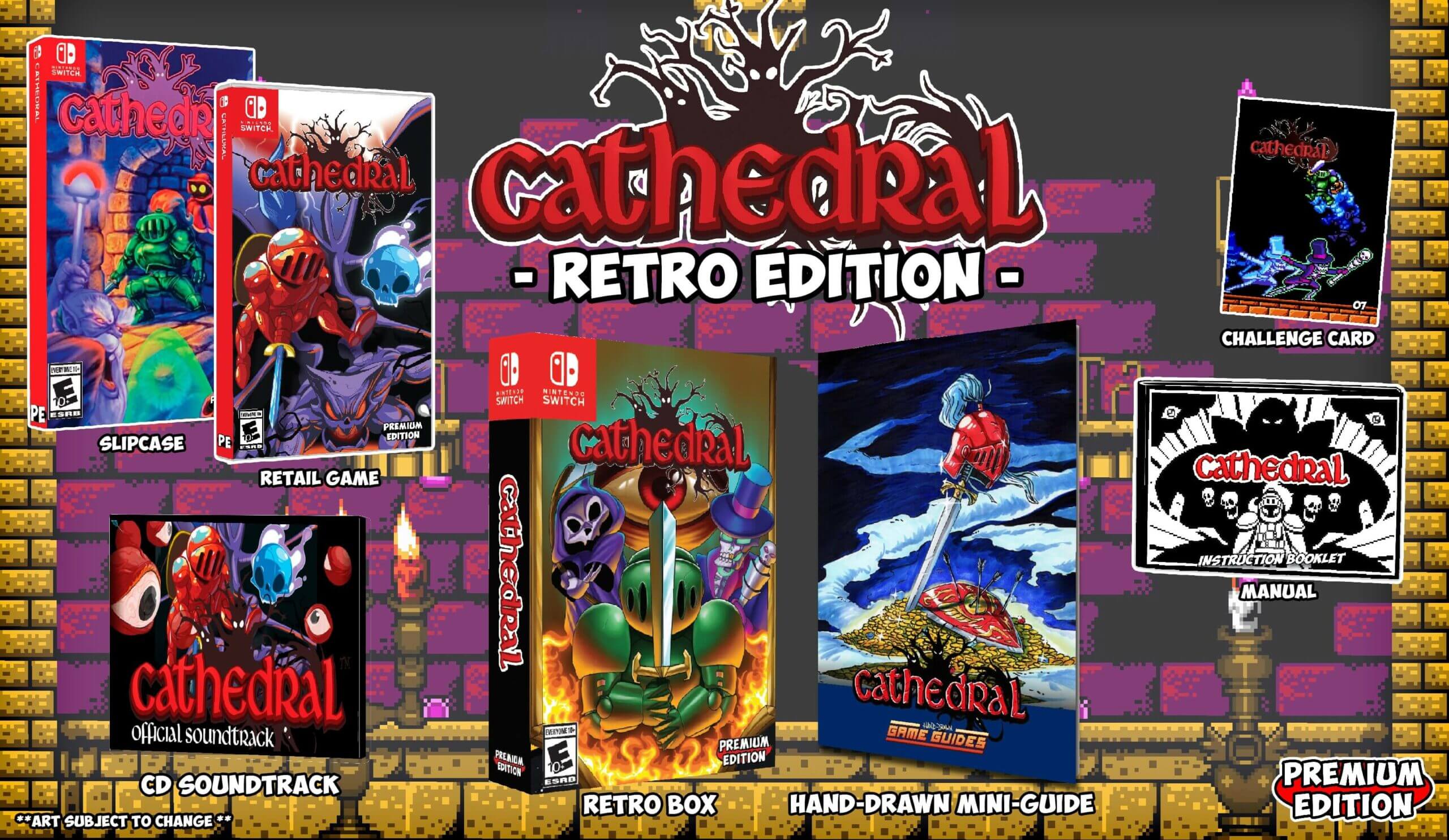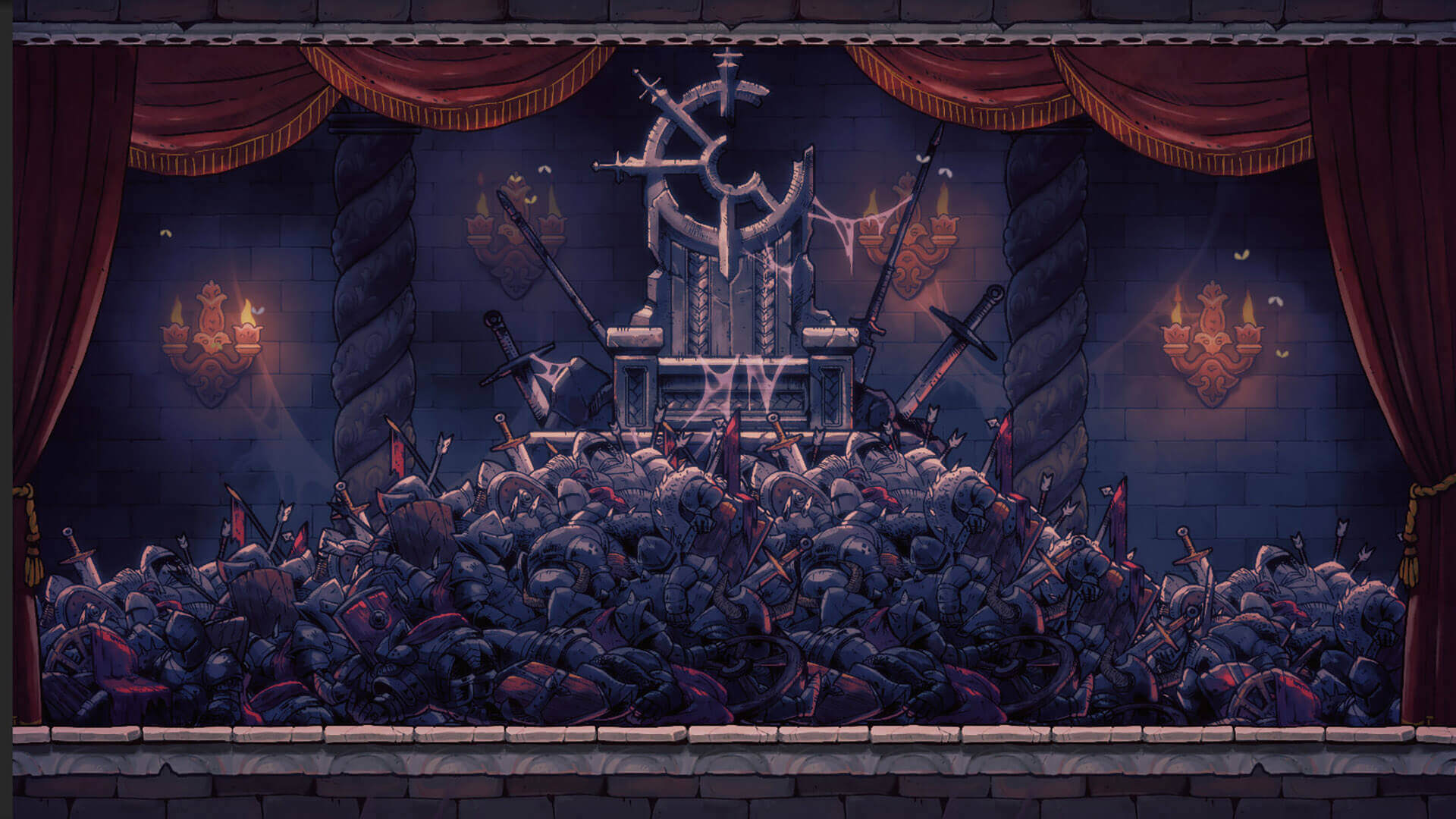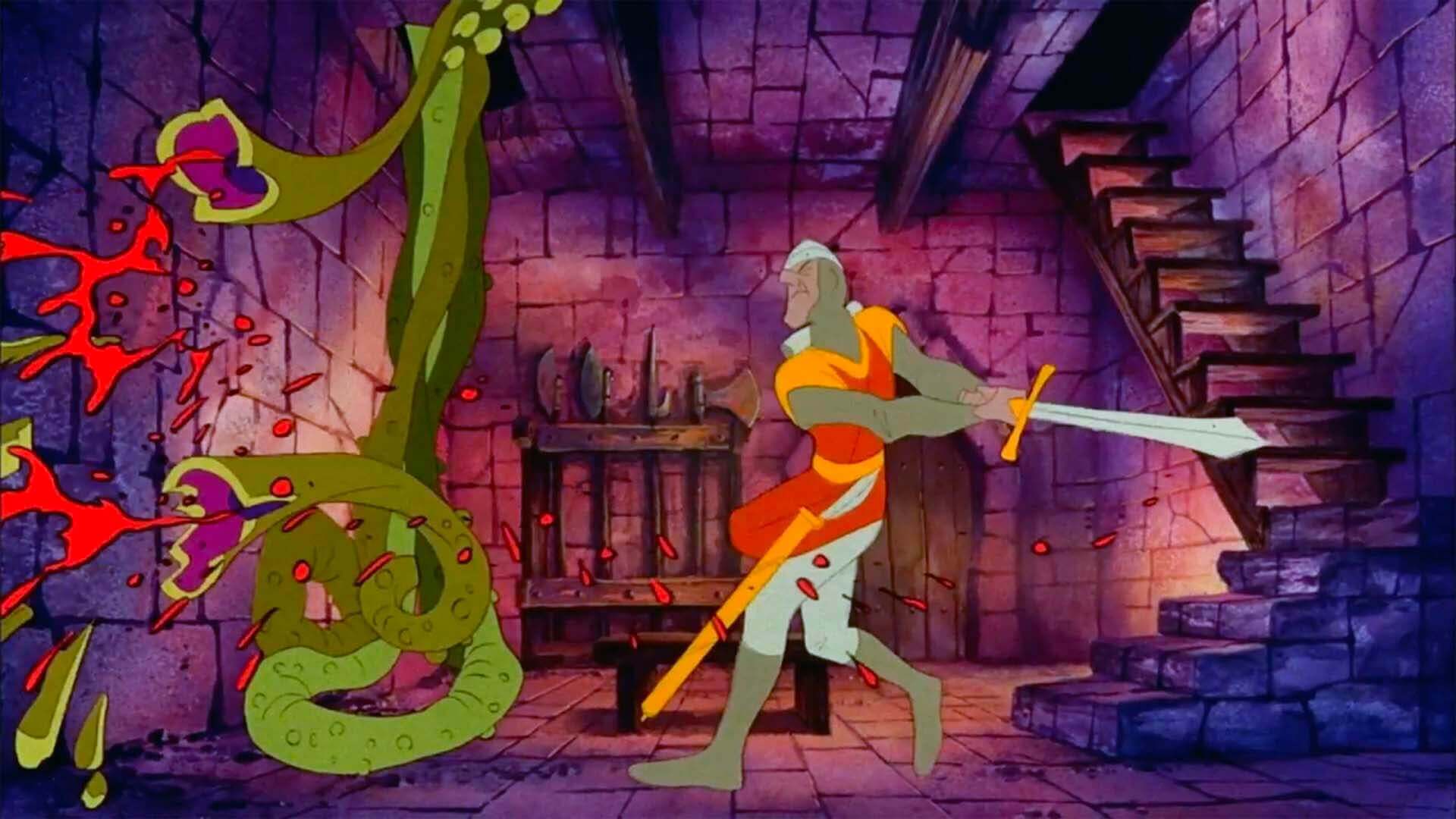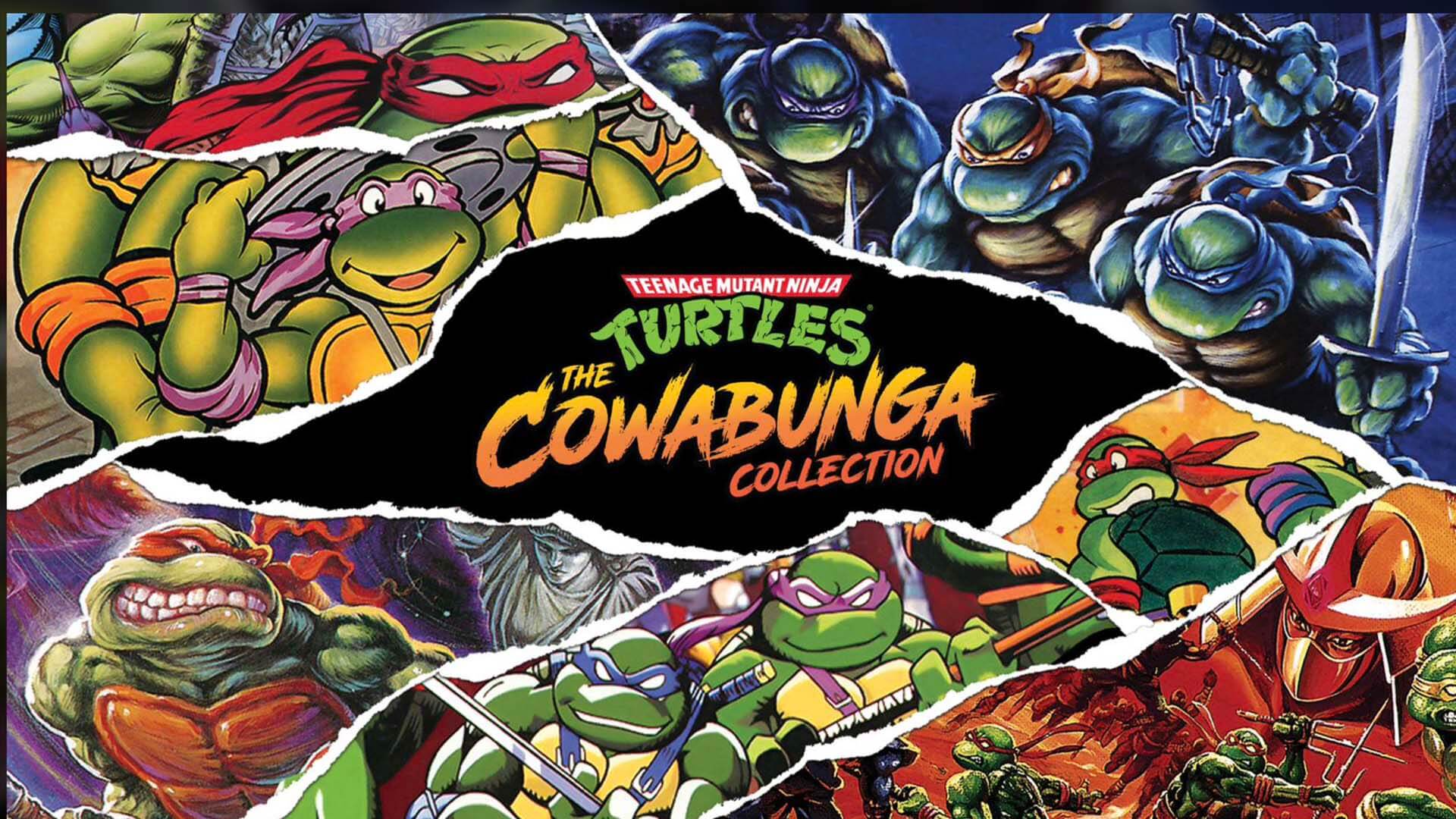April 25, 2022 — A Swedish-made 8-bit metroidvania developed by Decemberborn Interactive, Cathedral has been available on PC and Switch since 2019. But considering the game saw a release on PS4 on April 14, now seems like a fair opportunity to assess the overall experience and see whether it effectively caters to players’ retro cravings. For those who get a kick out of cryptic adventure games with constant difficulty, it might.
For nearly everyone else though, Cathedral is way too inconsistent, unpolished, and frustrating to be worth the hassle.
“Taking a quick glance at some gameplay videos, this may seem like a harsh assessment. After all, the basic controls and overall aesthetic bear a heavy resemblance to Shovel Knight, and most agree that Shovel Knight is an exceptionally well-made title. So how bad could it really be?”
Enjoyable on the Surface
The thing is, despite how alarmingly derivative the game can be, that first impression is far from misguided. The feel of playing Cathedral is easily its best asset, as it controls about as well as Shovel Knight and other games like it. The movement has that same precise, digital feel to it, making basic platforming mostly a breeze, and the pogo-jumping mechanics tied to the downward stab are just as fun to mess around with as it is in those other titles.
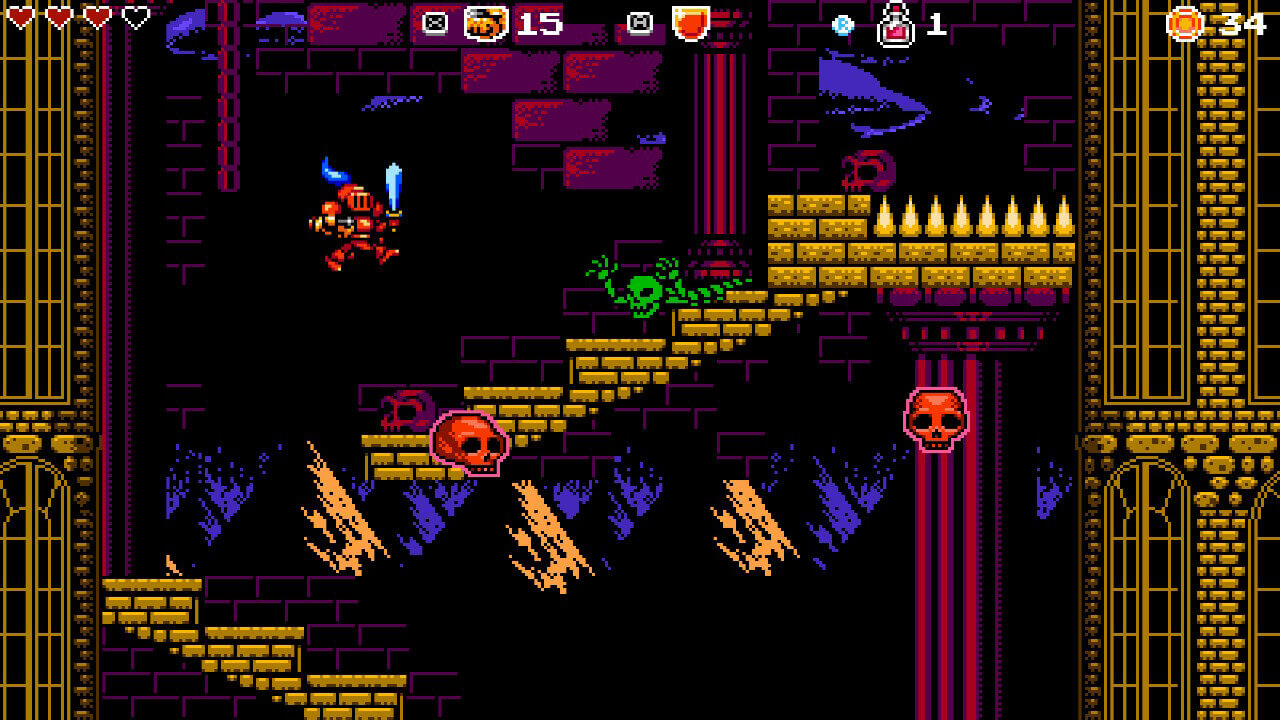
Just about any game is automatically improved with the addition of a pogo-jumping mechanic, but it helps that Cathedral makes effective use of this element. Enemies and other hazards become makeshift platforms thanks to the downward stab, and the level design often uses this quirk to great effect. One of my favorite uses of this mechanic is in the third dungeon, where players have to block an enemy’s bubble projectile so that it stays in place, allowing them to bounce on it and reach new areas. Even outside of what the level design requires, however, it’s inherently fun to encounter an enemy that flies toward you and bounce off it as it gives chase to gain crazy height. Cathedral doesn’t push the mechanic as far as titles like Shovel Knight do, but it’s still the element of the game I felt most positively about.
In general, when the path forward is mostly clear and you’re simply tasked with clearing a series of platforming challenges, Cathedral can be a pretty decent time. But as I said earlier, Cathedral happens to be a metroidvania, and this is unfortunately where most of the game’s major issues lie.
Best Left Uncharted
One particularly nagging problem has to do with how inconsistent the world design feels. Cathedral’s map may be surprisingly large and stuffed full of secrets to uncover, but all of that ultimately means very little if that map isn’t enjoyable to explore. Part of making a world fun to explore, especially in a metroidvania, involves reducing the tedium of backtracking, either by providing players with a new skill or by opening some kind of shortcut or side path after bypassing a section.
“One particularly nagging problem has to do with how inconsistent the world design feels.”
To its credit, Cathedral demonstrates a solid grasp of this idea at several points. Completing a precarious platforming section and being rewarded with a shortcut to an earlier point in the map inherently feels good, and Cathedral occasionally exploits this sense of reward just as effectively as other metroidvanias. But then there are numerous other times in which Cathedral completely neglects this principle and forces players to backtrack through significant stretches of content repeatedly to progress.
Some of the worst examples of this can be found in the first major dungeon, the ‘Necromancer’s Den’. Its layout is almost entirely vertical, and this combined with the limited number of side paths means that trudging through the same platforming sections over and over becomes inevitable. And these sections aren’t straightforward by any means; many of them have complex layouts and dangerous enemy placements that players cannot easily skip past, which means they will often have to take a slow approach to avoid losing a potentially large chunk of progress. This became especially irritating when having to backtrack through a certain cramped hallway with a buzzsaw traveling through it.
With no way to bypass the buzzsaw without taking damage, players are forced to agonizingly wait for the buzzsaw to reach the end of its path if they are low on health. And because of how obscure the dungeon’s puzzle solutions can be, it’s likely that players will have to go through these segments more times than necessary to figure out the path forward, which only exacerbates the issue.
An Unsatisfying Payoff
Cathedral could have made backtracking at least a little more tolerable through more consistent powerup progression, but the game doles out its movement upgrades at an agonizingly slow rate. Players get access to a double jump fairly early on, but they won’t obtain the dash ability until around halfway through the game. This wouldn’t be so bad if the player character’s base movement speed was up to the task, but unfortunately, our hero waddles his way through the world at Shovel Knight speed, which is to say, way too slow for a game like this.
Since Shovel Knight was a linear platformer that regularly threw new situations at the player, the slow speed in that game was never an issue. But when translated into a game with a sprawling open map, the monotony settles in fast.
And even once you finally get the dash, the achievement is undermined by the utterly baffling way in which the game handles its core upgrades. Essentially, players’ skills are separated into three categories, and for much of the game, you can only equip one skill per category at any given time. Since the double jump and dash both belong in the same category, you can probably guess what that means. And you can’t just equip a skill by going to the pause menu, oh no. You can only change your current skills by going up to one of the various shrines located on the map, which are incredibly spread apart from one another aside from a handful of segments.
“The amount of frustration players have to endure just to get there isn’t worth it, and the segments designed around the initial restriction of player abilities are not engaging enough to justify the game’s limitation.”
This led to what was probably one of the most disempowering feelings I’ve ever had in any metroidvania title. Equipping the dash rarely felt satisfying, as the resulting lack of a double jump meant I had to navigate vertical platforming areas in the most awkward roundabout ways imaginable. But going back to the double jump meant I had to plod around the map even more, making it feel like I hadn’t received any upgrade at all.
And if I reached an area with the double jump but needed the dash to bypass an obstacle and vice versa? Then I had to backtrack all the way to the last shrine I visited to equip the required skill. One particularly egregious level design oversight made this all the more apparent. In the ‘Deep Jungle’ segment, I came across a bed of spikes that could only be cleared with a dash. But I had the double jump equipped, I needed to go back to the previous screen, which housed a shrine I could use to switch my loadout.
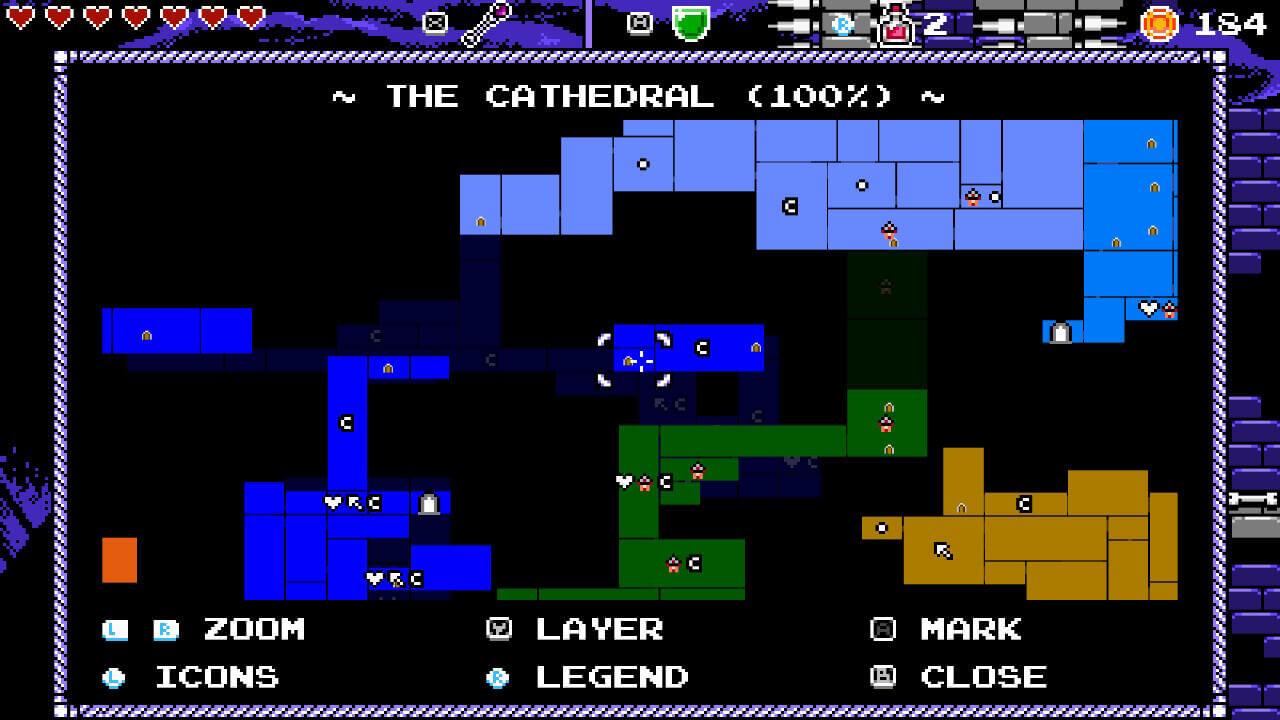
The problem? The gate that I had to open to reach the bed of spikes inexplicably shut itself, and with no apparent way to get back to the keyhole required to open it, I had no choice but to take damage on the bed of spikes and abuse invincibility frames to get past it. It’s entirely possible that I missed a hidden breakable block somewhere, but it’s a perfect example of the game’s approach to upgrades and overall level design — Cathedral can be way too restrictive for its own good.
At least some of the tedium instilled by being forced to manually switch between dashing and double-jumping was likely part of the design — if only to make it feel more rewarding when you finally obtain the ability to use both at the same time. But the amount of frustration players have to endure just to get there isn’t worth it, and the segments designed around the initial restriction of abilities were not nearly engaging enough to justify the limitation. It came off as arbitrary, and instead of feeling rewarded when I overcame this restriction, I only felt annoyed, which is not ideal in a metroidvania.
More Issues Still
Other frustrating bits of design can be found all over the game. The third dungeon, for instance, features a tricky section where you have to platform across a series of clouds while avoiding hawks that spawn in and rush you. It’s incredibly easy to get knocked off the clouds in this section, which by itself isn’t an issue.
Every time you fall down, you have to go on a lengthy trek through multiple screens’ worth of vertical platforming to try again. If the game was more consistent in punishing the player this harshly for such a simple mistake, then this likely would not have been quite as irritating as it ended up being. But as it stands, this design choice adds yet more tedium to an already tedious game.
Much the same can be said about Cathedral’s boss encounters. Early on, these don’t seem too bad, but it soon becomes apparent that many of them are designed to be roadblocks that take an excessively long amount of time to beat unless players look around for stronger gear. Implementing difficult boss encounters that can be made easier through exploration is standard fare for metroidvanias, but many of them still make it rewarding for players to take on a boss without having to go out of their way to find upgrades they may have missed.
But the inflated health pools of Cathedral’s bosses turn their fights into a drawn-out slog unless players scour the world more thoroughly, which itself is a chore thanks to the game’s aforementioned issues with world design and backtracking. Even when you do obtain the necessary upgrades, however, these bosses really aren’t all that engaging. Boss designs range from a necromancer who’s best beaten by simply camping on one side of the screen to a dragon who practically stays glued to players unless they are on point with their dashes and jumps. Not exactly what I’d call a fun time or ingenious boss design.
SCORE
5
OUT OF 10
THE GOOD STUFF
- Game controls about as well as its inspirations.
- Pogo-jumping is fun and utilized well in the level design.
- Areas occasionally use shortcuts in a smart way.
- Visuals can look fairly decent at times.
CONCERNS
- Shovel Knight-esque controls are unideal for the world design.
- Inconsistent level design often makes backtracking a chore.
- Acquirable abilities are implemented in an unsatisfying manner.
- Certain parts of the level design are clearly not polished.
- Boss design is rough and excessively designed around overworld upgrades.
Conclusive Thoughts
It’s a shame Cathedral ended up being such an aggravating experience, as the developers evidently put a lot of hard work into it. It’s a big game with a surprising amount to see and do, and even though the visuals have more than a few rough edges, they nonetheless have plenty of details and retro touches that are worth appreciating.
Ultimately, it feels like Cathedral would’ve been much more enjoyable to play had it been designed as a linear platformer rather than a metroidvania. Sure, the game would’ve probably invited even more Shovel Knight comparisons than it already has, but the controls feel best suited for a more linear structure, and the title is generally at its best when it simply has players progress from point A to point B. As soon as the metroidvania elements of Cathederal crept back in, the game began to fall apart (which isn’t to say that the developers shouldn’t try to make another metroidvania and improve on what they established in this title.)
A metroidvania using Shovel Knight’s gameplay is not an inherently bad idea, but Cathedral simply lacks the care and polish needed to make it work.
Cathedral is developed by Helsingborg, Sweden-based Decemberborn Interactive and published by Gothenburg’s Elden Pixels, and is finally available on the PlayStation 4 store. Already beloved by metroidvania enthusiasts on Steam and Switch, the pair of Swedish companies are proud to bring the acclaimed 8-bit-inspired adventure over to the PlayStation 4.

